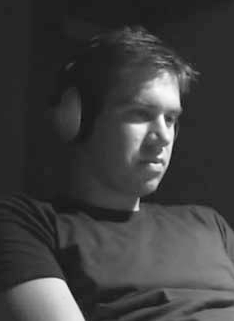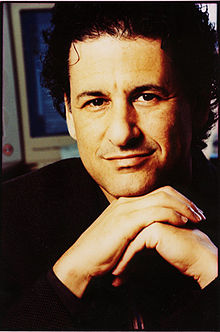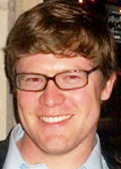
http://www.umn.edu/urelate
612-624-6868
Fall 2013 Colloquia
Thursdays, 4:00 - 5:30 pm, Elliott N119
September 12
CGSC 8410: Perspectives in Learning Perception and Cognition
Student meeting
September 19

Geoffrey Ghose, Neuroscience, Psychology, Radiology
"The neuronal basis of inattention blindness"
Decades of study have revealed that attention can be flexibly allocated according to task demands to enhance representations at a cellular level within the visual system. However, it is far from clear that the reported changes in visual responses are sufficient to explain the sometimes dramatic effects that attention can have on our percepts. There are three central challenges to establishing such sufficiency. First, most studies looking at the effects of attention on visual responses have not carefully and simultaneously measured behavior, and even if they have, it is not obvious how to compare behavioral effects, typically measured in performance or reaction time, with physiological ones, typically measure by changes in firing rate. Second, even when robust attention effects have been observed for particular cells, there has been no attempt to test whether the particular neurons under study substantially contribute to the animal’s percepts. Third, tasks in which attention can have very dramatic effects on perception have largely been ignored.
To address the first two issues, our lab has developed novel analytical techniques that allow a quantification of neuronal and behavioral reliability and temporal precision. These techniques can also test, on a moment-by-moment basis, how neuronal fluctuations predict the actual choices made by an animal in a perceptual task. To address the third issue, we have applied these techniques to recordings made while monkeys performed a challenging detection task in which the behavioral relevant change was a very brief change that occurred according to a defined schedule. Because of the difficulty of this task, unexpected changes were essentially invisible to the animal.
We found that such unexpected changes were also invisible to individual neurons in a particular visual area, and the magnitude of the physiological effects were comparable to those seen in behavior. Surprisingly, we found that the changes in a very small number of neurons were completely sufficient to explain perception. Our data suggests that certain percepts may be completely based on the selective sampling of a very small pool of neurons whose reliability depends on attention.
Suggested reading:
- Harrison IT, Weiner KF, Ghose GM. (2013) Inattention blindness to motion in middle temporal area. J Neurosci. May 8;33(19):8396-410.
- Ghose GM, Bearl DW. (2010) Attention directed by expectations enhances receptive fields in cortical area MT. Vision Res. Feb 22;50(4):441-51
September 26
 John Collins, Computer Science
John Collins, Computer Science
"Evaluating rational agents through competitive simulation"
Capacity and performance of human and artificial agents are challenged in domains that demand fast-paced rational decisions. This is especially true in competitive domains where available information is incomplete and uncertain. Examples include games such as poker and soccer, as well as a variety of economic domains. Decision quality in competitive economic domains can drive economic success. Understanding capabilities and limits to rationality in competitive economic domains can inform market design and public policy. Competitive simulations are an effective approach to stimulating new approaches to high-performance rational behavior, and to evaluation of market designs and public policy options. This talk will focus on trading-agent competitions in several domains that involve multiple interacting markets. We will discuss interesting challenges in simulation design, agent design, and evaluation of simulation results. Our current focus is on Power TAC, a competition focused on understanding future retail electric energy markets.
October 3
 William Bart, Educational Psychology
William Bart, Educational Psychology
"Chess Training: A Means to Mental Fitness for Youth and the Elderly?"
The study of chess cognition has been a fertile topic in cognitive science since the pioneering work by Adrian de Groot (1965) entitled Thought and Decision in Chess. Chess is a complex game that entails usage of an array of higher-order thinking skills. Much research in chess cognition has focused on the cognitive differences between chess experts and chess novices. Although there is a widespread belief in the worldwide chess community that chess training provides many cognitive benefits for youth and others, there is a paucity of published research on the cognitive effects of chess training. This talk will feature an exposition of several recently published studies that indicate that chess training engenders positive cognitive benefits for participants. A cognitive neuroscience framework will then be presented that posits cognitive benefits of chess training. The framework will then be applied to the problem of Alzheimer's disease and related forms of cognitive decline among the elderly in providing a rationale for the use of chess training as a means to promote mental fitness for the elderly as well as youth.
"Cognition, Psychopathology and the Brain"
The Center for Cognitive Sciences
FALL INSTITUTE 2013
Tuesday, October 8, Mayo Auditorium
October 17
 Adam Johnson, Psychology, Bethel University
Adam Johnson, Psychology, Bethel University
"Cognitive science of religion: intuitions and inferences about the beginnings and ends of human life."
Suggested reading:
Boyer P (2003) Religious thought and behaviour as by-products of brain function. Trends Cogn Sci, 7(3), 119–124.
Monday, October 21
4:00 PM - 5:30 PM
275 Nicholson Hall
 Dan Levitin, Psychology, McGill University
Dan Levitin, Psychology, McGill University
"Measuring Expressivity in Music Performances"
October 24
 Thomas Stoffregen, Kinesiology
Thomas Stoffregen, Kinesiology
"The Devil's Spectacles"
One of the most venerable concepts in the behavioral sciences is the theory of the retinal image: Light rays enter the eye, are refracted by the lens, and are projected onto the retina as an inverted image like a picture inside a camera. It is widely accepted that the retinal image is the stimulus for vision, and that theoretical explanations of vision must work from this premise. Retinal image theory is one way of thinking about vision but it is not the only way. Where did this concept come from? What other theories preceded it? When, how, and why were the old theories replaced with retinal image theory? To answer these questions I follow a trial that extends over 2000 years of history. Retinal image theory typically is thought of as being the province of behavioral scientists, but its origins lie at the intersection of philosophy, technology, astronomy, microbiology, optometry, and medieval theology. Retinal image theory might have come about earlier than it did. The title of the talk alludes to this delay.
October 31
 Joseph Redden, Carlson School of Management
Joseph Redden, Carlson School of Management
"The Self-Reflective Component of Satiation"
A vexing challenge for people is that they get less enjoyment as they repeatedly consume the same thing. This consequence of satiation arises across many literatures, including economics (diminishing marginal utility), psychology (adaptation, habituation), food sciences (nutritional needs), advertising (wearout), and well-being (hedonic treadmill). Although researchers have often viewed satiation as an automatic meter that tracks the quantity consumed and inexorably leads to satiation, growing research indicates that satiation also has a malleable component rooted in self-reflection. This talk will discuss the nature of this self-reflective component of satiation, demonstrate its role across a series of experimental findings, and discuss the implications for influencing satiation to improve well-being.
November 7
 Rhodri Cusack, Brain and Mind Institute, University of Western Ontario
Rhodri Cusack, Brain and Mind Institute, University of Western Ontario
"Neuroimaging of the mind's eye and ear"
November 14
 Paul Schrater, Psychology
Paul Schrater, Psychology
"Probabilistic models of value for decisions during action"
While it is fair to say we choose what we value, the relative ease with which we make choices and actions masks deep uncertainties and paradoxes in our representation of value. For example, ambiguous and uncertain options are typically devalued when pitted against sure things - however, curiosity makes uncertainty valuable. In general, ecological decisions can involve goal uncertainty, uncertainty about the value of goals, and time/state-dependent values.
When a soccer player moves the ball down the field, looking for an open teammate or a chance to score a goal, the value of action plans like passing, continuing or shooting depends on conditions like teammate quality, remaining metabolic energy, defender status and proximity to goal all of which need to be integrated in real time. We show how probabilistic representations of value can solve the problem of converting and integrating heterogeneous values, like metabolic costs vs. scoring a soccer goal. By modeling values in terms of probabilities of achieving better outcomes, we decompose complex problems like the soccer player into weighted mixture of control policies, each of which produces a sequence of actions associated with more specific goal. Critically, the weights are inferences that integration all the time-varying probabilistic information about the relative quality of each policy. We use the approach to give a rational account for a set of reaching and oculomotor experiments with multiple goals and obstacles.
Suggested reading:
Cisek, P., & Kalaska, J. F. (2010). Neural mechanisms for interacting with a world full of action choices. Annual review of neuroscience, 33(March), 269–98
November 21
 Jed Elison, Institute of Child Development
Jed Elison, Institute of Child Development
"The Curious History of the Gap/Overlap Procedure."
In 1967, M.G. Saslow published two papers in the Journal of the Optical Society of America. One of these papers would introduce a subtle experimental manipulation to a standard oculomotor paradigm. This paradigm has subsequently been studied in myriad psychiatric, neurodevelopmental, neurodegenerative, and neurological conditions, in concert with single-unit recordings in nonhuman primates, and in conjunction with electrophysiological recording during infancy to mention a few examples. This experimental procedure would prove exceptionally generative and became the source of spirited debate in the early 90’s surrounding the precise mechanisms responsible for the “gap effect.” Developmental psychologists inherited a variant of the task that largely neglected this rich literature, with a couple of notable exceptions. In the early 70’s, researchers were keen to elucidate the effective visual field in neonates and young infants, as this promised to inform models of infant cognition predicated on patterns of looking behavior. It was quickly determined that the effective visual field of the infant depended on whether a fixation stimulus overlapped with the presentation of peripheral target stimulus or was extinguished prior to the appearance of the peripheral target.
For the most part, these two lines of research were sustained in parallel for nearly 40 years. The task is currently widely applied in longitudinal, prospective studies of infants at risk for developing autism. Atypical performance in the task is thought to represent a core feature of ASD with the potential to inform developmental models of symptom emergence (unlike other popular cognitive theories like theory of mind deficits, executive function deficits, or the theory of weak central coherence). Unifying the entire corpus of literature on the task promises to clarify and advance conceptual models of autism pathogenesis.
December 5
 Al Yonas, Institute of Child Development
Al Yonas, Institute of Child Development
"The development of perception"
